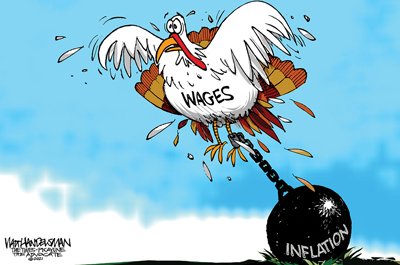Inflation refers to the general increase in prices for goods and services over time. This means that the purchasing power of money decreases, as it can buy fewer goods and services than before. Inflation can be caused by various factors, such as increased demand, increased production costs, or excessive money supply. While moderate inflation is generally considered healthy for an economy, high inflation can erode purchasing power, reduce economic stability, and create uncertainty.
Now for the quiz:
1. Inflation occurs when aggregate supply is:
- more than aggregate demand
- less than aggregate demand
- equal to aggregate demand
Hint: aggregate supply = total supply of goods + services
2. Yearly 3% or less price increases show:
- galloping inflation
- hyperinflation
- creeping inflation
Facts:
Raw materials and wages increase reduce inflation: FALSE
Mild inflation promotes economic growth: TRUE
Runaway inflation obstructs economic growth: TRUE

